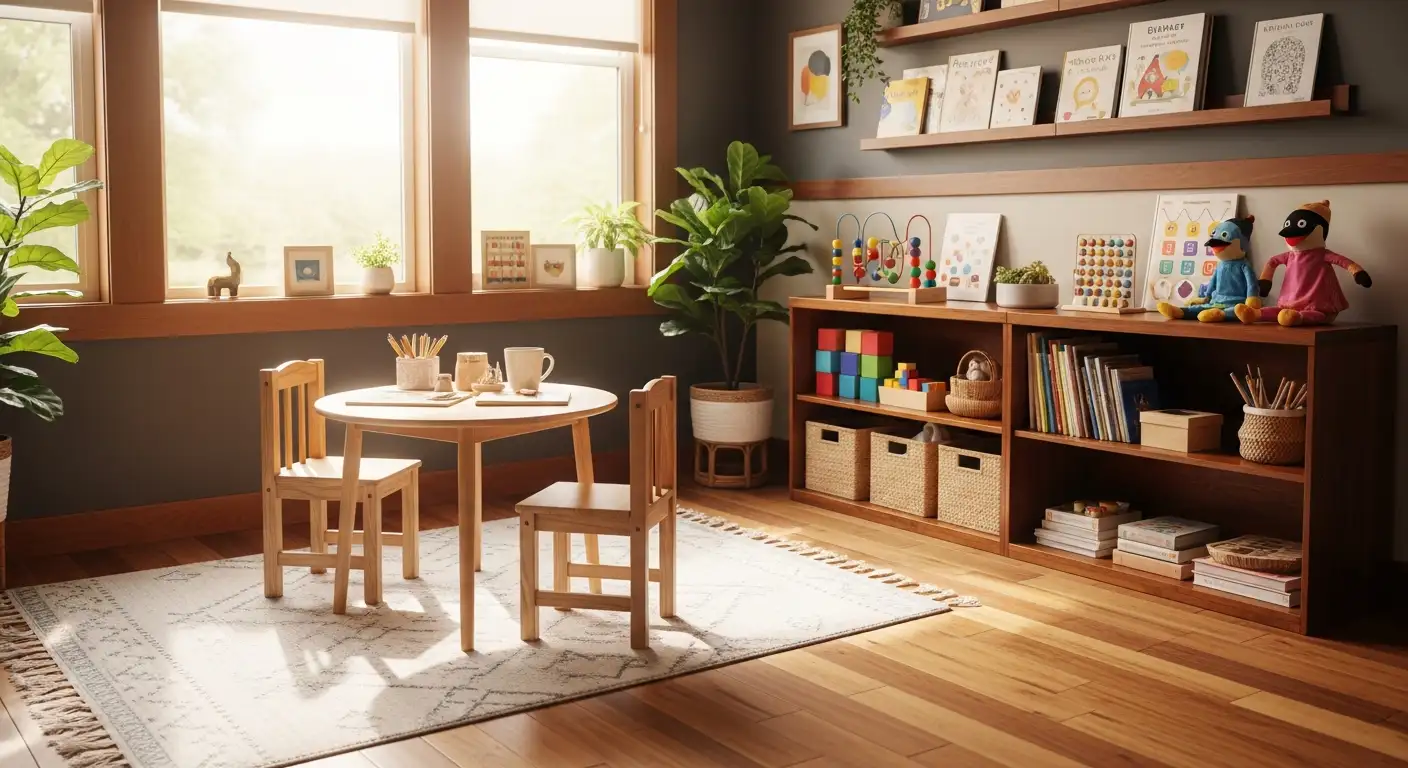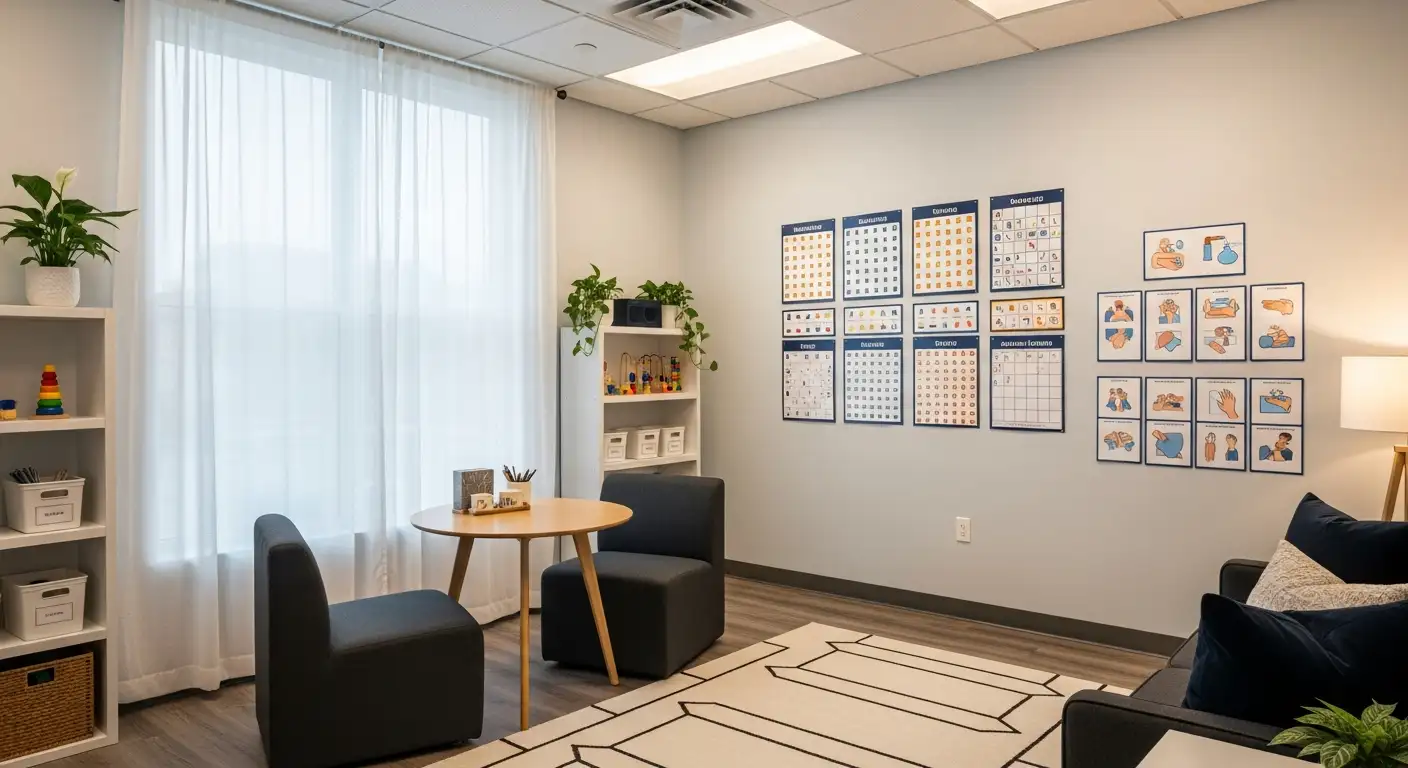Strategies for Improving Focus and Attention in Occupational Therapy


Unlocking the Potential of Focus with Strategic OT Interventions
Occupational therapy (OT) offers an array of evidence-based strategies designed to improve focus and attention in children and adults. Through sensory integration, cognitive training, environmental modifications, and engaging activities, OT professionals help clients develop skills essential for academic, social, and daily functioning. This article delves into effective methods and practical tools that occupational therapists use to foster sustained attention and functional independence.
Understanding the Basics of Attention and Its Significance in OT

What are the different types of attention, and why are they important?
Attention comes in several forms, each playing a vital role in everyday functioning. These include sustained, selective, alternating, and divided attention.
- Sustained attention is the ability to focus on a task over a period of time. This type of attention is crucial for tasks requiring continuous concentration like reading or listening.
- Selective attention involves focusing on specific stimuli while ignoring others, essential for filtering distractions in busy environments.
- Alternating attention allows switching focus between different tasks or sources of information, vital for multitasking and adaptability.
- Divided attention enables handling multiple tasks simultaneously, which supports activities like cooking while talking or driving.
Each type supports different functions in learning, safety, and social interactions, helping children manage their environment effectively.
Why is attention important in learning, safety, and social skills?
Reliable attention is foundational for academic success, safe behaviors, and social competence. For example, children need sustained attention to follow instructions and complete assignments. Selective attention helps them concentrate amid classroom distractions, ensuring better learning outcomes. Alternating and divided attention are crucial for keeping up with busy, multitask-oriented daily routines.
Poor attention can lead to challenges like missing important information, acting impulsively, or neglecting safety cues, potentially increasing the risk of accidents or social miscommunications.
What are signs of attention and hyperactivity challenges in children?
Children struggling with attention may display signs such as losing items frequently, making careless mistakes, and failing to listen or complete instructions. Distraction, forgetfulness, and disorganization are common indicators.
Hyperactivity and impulsivity may be observed through excessive fidgeting, blurting answers, interrupting others, and difficulty waiting their turn. These behaviors often coexist with attention difficulties, especially in conditions like ADHD.
An example case highlighted how breaking tasks into smaller steps and offering engaging activities can improve a child's attention span. Such tailored approaches, often guided by occupational therapists, help manage these challenges effectively.
Strategies to support attention and improve focus
Occupational therapy leverages a range of techniques tailored to each child's needs.
| Strategy | Description | Purpose |
|---|---|---|
| Simplify tasks | Break tasks into smaller, manageable steps | Reduce overwhelm and improve focus |
| Consistent routines | Establish predictable daily schedules | Provide structure and reduce anxiety |
| Visual supports | Use visual cues, charts, timers | Help understand expectations and time management |
| Sensory regulation | Incorporate sensory breaks, movement activities | Reset attention and energy levels |
| Environmental modifications | Create quiet, clutter-free spaces | Minimize distractions |
| Self-regulation training | Teach breathing, mindfulness, and emotional control | Manage impulsivity and improve focus |
In addition to these, educators and parents play a crucial role by creating supportive environments, employing visual aids, and implementing behavioral strategies that reinforce attention skills.
How does occupational therapy tailor interventions to individual needs?
OTs conduct initial assessments to identify specific attention challenges and sensory sensitivities. Based on the findings, they design personalized intervention plans that might include sensory integration, cognitive exercises, or behavior modification techniques.
Play and movement-based activities are integrated to naturally develop attention and self-regulation skills. Using tools like timers, visual schedules, and fidget objects can also support ongoing engagement.
Overall, targeted strategies aim not only to enhance focus but also to foster independence, academic achievement, and social participation, making occupational therapy a comprehensive approach to managing attention difficulties in children.
Targeted Activities and Interventions for Different Types of Attention
What activities and techniques can improve attention span in children, including those with autism?
Enhancing attention span in children requires a mix of structured, engaging, and sensory-based activities tailored to individual needs. Visual schedules and timers help children understand the flow of activities and estimate how long they should concentrate, fostering sustained attention. Breaks or sensory intervals—such as tactile play or calming sensory input—can prevent overload and re-energize focus.
Incorporating reinforcement strategies like praise, rewards, and positive feedback encourages children to stay attentive. Implementing consistent routines provides predictability, reducing anxiety and distraction.
Interventions should be personalized, involving activities like puzzles, obstacle courses, or pretend play that naturally promote focus. Using fidget toys or sensory cushions helps regulate sensory input, especially for children with sensory sensitivities or autism. These techniques, combined with behavioral reinforcement, create an environment conducive to longer attention spans, promoting better learning and engagement.
What are divided attention activities in occupational therapy and how do they benefit individuals?
Divided attention activities challenge individuals to process multiple sources of information or perform several tasks at the same time. These exercises simulate real-life multitasking, vital for daily functioning.
Examples include cooking while listening to music, talking on the phone during a task, or sorting objects while following an instruction set. Such activities help strengthen the brain's capacity to manage concurrent stimuli, which is often impaired in conditions like ADHD or after brain injury.
Regular practice of divided attention tasks improves cognitive flexibility, working memory, and task switching skills. They are often integrated into structured programs—sometimes using computerized tools like Attention Process Training (APT)—to systematically enhance attention. The benefits include increased independence, safety, and efficiency in daily activities, leading to improved overall functional performance.
Sensory Strategies and Environmental Modifications for Focus Enhancement
How can sensory strategies be used within occupational therapy to improve focus?
Sensory strategies are tailored techniques employed in occupational therapy to help children regulate their sensory input, ultimately enhancing their concentration. These strategies focus on supporting the child’s individual sensory processing needs by incorporating movement, calming sensory tools, and alternative seating options.
For example, using weighted blankets or calming spaces can provide deep pressure input that soothes overstimulated children. Wiggle cushions or wobble seats give opportunities for gentle movement, which can help meet sensory seeking behaviors and improve focus during tasks.
Therapists observe each child's responses to sensory input and involve the child in choosing preferred sensory tools and activities. This personalized approach ensures that interventions are effective and acceptable for the child's needs. Sensory supports like ear defenders to reduce noise, textured toys to provide tactile input, or visual modifications in the environment help diminish overstimulation or sensory-seeking behaviors. Space adjustments, such as creating quiet corners or using calming lighting, further assist children in self-regulating.
By implementing these sensory strategies, children develop better self-regulation skills which allow them to stay engaged and attentive. This promotes participation and success at school and in daily routines, making sensory strategies a vital component of occupational therapy interventions aimed at attention improvement.
Practical, Evidence-Based Strategies and Activities in Occupational Therapy
What are some practical, evidence-based ways to enhance attention and concentration through occupational therapy?
Occupational therapy (OT) employs a variety of tailored, research-supported strategies to bolster attention and concentration. Central to these techniques are the development of self-regulation, executive functioning, and sensory integration skills. Visual supports such as timers, checklists, and visual schedules serve as clear cues to guide routines and task completion.
Sensory-based activities—using tools like textured toys, weighted blankets, or swing therapy—help regulate sensory input, which can reduce overwhelm and improve focus. Structured routines in both classroom and home environments contribute to predictability, decreasing anxiety and promoting sustained attention.
Play-based interventions are highly effective. Activities such as obstacle courses, arts and crafts, puzzles, and attention-focused games (like Simon or coin searches) encourage engagement while exercising cognitive control.
Therapists also teach children and caregivers self-regulation strategies, including techniques from programs like The Zones of Self-Regulation, to recognize and manage emotions and energy levels.
Creating an environment that minimizes distractions—using visual cues, organizing materials into labeled stations, and providing sensory tools—supports ongoing attention and task engagement. Home programs and caregiver education further reinforce these skills, making interventions sustainable across settings.
Are there specific activities designed to improve attention and concentration in children?
Yes, there are numerous specific activities crafted to enhance attention and focus in children. Creative tasks such as coloring, making collages, or engaging in arts and crafts not only hold attention but also help develop fine motor skills.
Cognitive activities like puzzles, memory matching games, and sequencing tasks strengthen attention span and task management. Popular games such as Simon, I Spy, or coin search improve divided and sustained attention through fun and interactive means.
Physical activities integrated into therapy—like obstacle courses, dancing, or yoga—help release excess energy, making it easier for children to stay attentive.
Establishing routines with visual schedules, using timers or sand clocks, provides clear expectations and helps children transition between activities smoothly. Combining these with healthy lifestyle habits, such as balanced nutrition and regular exercise, further enhances attention capabilities.
In summary, these activities—when incorporated into daily routines and supported by environmental modifications—offer a comprehensive approach to improving children’s focus, enabling better engagement in academic and social tasks.
Assessment, Collaboration, and the Role of Parents in Skill Development
What assessment methods are used to identify attention difficulties and tailor occupational therapy interventions?
To effectively address attention challenges, occupational therapists utilize a variety of assessment techniques. These include standardized tools like the Adult ADHD Self-Report Scale (ASRS) and specific sensory processing evaluations that identify how sensory inputs may interfere with focus.
In addition to standardized tests, therapists conduct functional performance assessments, such as the Canadian Occupational Performance Measure (COPM). These assessments involve observations and checklists during real-life activities to gauge how attention issues impact daily routines.
Semi-structured interviews are also important. For example, clients and parents may complete detailed questionnaires to highlight problematic areas and set individualized goals. This comprehensive approach ensures that interventions are not only based on observable behaviors but also tailored to meet personal needs.
Assessment processes often include measuring emotional regulation, impulsivity, and stress levels. Such a holistic view helps therapists design interventions that support both attention and overall well-being.
In summary, employing diverse methods—standardized scales, functional observations, sensory evaluations, and interviews—allows occupational therapists to accurately identify attention difficulties and create tailored, effective strategies for each individual.
Fostering Attention: The Role of Multimodal Strategies and Collaboration
Occupational therapy provides a comprehensive framework for supporting children and adults in developing and maintaining attention and focus. By integrating sensory, cognitive, and environmental strategies, and emphasizing personalized, goal-oriented interventions, OT practitioners enable individuals to overcome attention challenges and thrive in their daily lives. Collaboration with families, educators, and healthcare providers ensures holistic support and sustained progress, making attention enhancement an achievable and meaningful goal in occupational therapy practice.
References
- Types of Attention and Activities for Each Type - The OT Toolbox
- "Helping Your Child Focus: An OT's Guide to Improving Attention"
- Attention: Tips to Improve Focus - Pediatric Movement Center
- Occupational Therapy Strategies for Improving Attention in ADHD
- Improve your Child's Attention and Decrease Hyperactivity
- How Occupational Therapy Can Improve Focus and Attention in Kids
- Attention and Concentration | NHS GGC
- 8 Occupational Therapy Techniques to Help Kids Improve ...
- ADHD Focus Fix: 4 Pediatric OT Insights - Skill Point Therapy
- [PDF] Classroom - Attention and Concentration Strategies to support ...
Recent articles

How ABA Therapy Teaches Problem-Solving Skills
Unlocking Potential: The Role of ABA Therapy in Developing Problem-Solving Skills

Can Autistic People Have Kids?
Parenting on the Spectrum: Strengths, Challenges, and Support for Autistic Parents

Is Your Autistic Adult Child Ready To Move Out?
Empowering Independence: Preparing Your Autistic Adult Child for Life on Their Own

The Role of ABA Therapy in Teaching Independent Living Skills
Unlocking Independence: How ABA Therapy Empowers Daily Living Skills

The Importance of Speech Therapy for Communication Development
Enhancing Communication: How Speech Therapy Shapes Childhood Development

How Behavior Analysis Helps Children Learn to Follow Instructions
Unlocking Skills: The Power of Behavior Analysis in Teaching Children to Follow Instructions


